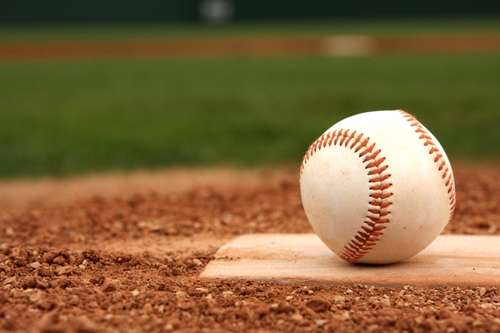
If you were standing on home plate with a baseball bat in your hand and a pitch was thrown, you'd have a lot of decisions to make. Where will the ball cross the plate? Should you swing at this pitch or let it go? Where should you aim the bat? How hard should you swing? In the major leagues, pitches blaze past your eyeballs and batters have to make every one of those decisions in half the time it takes to blink. How is that even possible? No wonder there's so much research that goes into the science of the sport.

In The Bli— Of An Eye
A pitch takes about 500 milliseconds to travel from the pitcher to the plate, although a fastball can take as little as 375 milliseconds. The moment the ball leaves the pitching mound, the batter is already at a disadvantage. That's because it takes his brain 75–100 milliseconds to even process the fact that the ball is coming toward him. It also takes time to swing: the fastest swings in baseball happen in 100–150 milliseconds. That leaves only about 150 milliseconds for the batter to make a decision about his swing. By comparison, it takes as much as 400 milliseconds to blink.
Maybe Yogi Berra was onto something when he puzzled over how anyone could think and hit at the same time. Stop to consider your options, and the ball will have passed you by an eternity ago. So how do baseball players make such fine-tuned decisions in a tiny fraction of a second?
From Eye Gaze To Brainwaves
Researchers have poured countless hours and funding dollars into the study of that brief moment in time. One way they do it is by watching how players keep their eyes on the ball. A 2014 study in the journal Optometry and Vision Science found that until very late in the pitch, players follow the ball with their head, not just their eyes. Only when the ball gets very close do their eyes start moving around.
A 2017 study in the same journal built on this by examining whether players looked at a ball differently depending on if they planned to swing or not. They did indeed. Whether they planned to swing or not, they followed the ball with head movements until about 150 milliseconds before it arrived, just as the 2014 study found. But when the players planned to "take" a pitch rather than swing, they eventually shifted their gaze ahead of the ball to a point where they predicted it would cross the plate.
On the contrary, when they planned to swing, their eyes stayed glued to the ball until about 50 milliseconds before it crossed the plate. The researchers attributed these differences to the kinds of information that are important in each instance: when you're going to swing, you need all the possible information about where the ball is so you can successfully hit it, but when you're "taking" the pitch, paying attention to where it crosses the plate can be good information for the next pitch.
Scientists have also studied what goes on in players' brains when they're standing at home plate. Columbia University researchers Jason Sherwin and Jordan Muraskin have fitted players with electroencephalography (EEG) caps and rolled them into functional magnetic resonance imaging (fMRI) machines to analyze their brain signals as they watch a simulated baseball pitch on a computer screen. It turns out that Yogi Berra was right: if you're going to hit the ball, you just can't think.
"When we first started doing this work, we started seeing that when subjects were getting the pitches wrong, they were using the frontal parts of their brain too much," Sherwin told NPR. "The frontal parts of the brain are mostly involved in deliberate decision-making. And when they get involved, they slow down the speed of your decisions." And when the difference between a hit and a strike is a matter of a few hundred milliseconds, you just can't afford to let your brain slow you down.
Comments